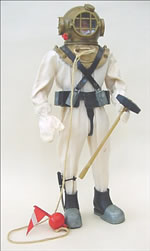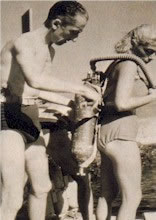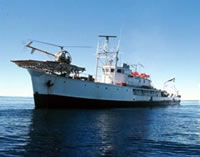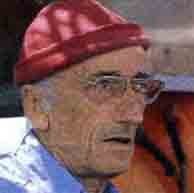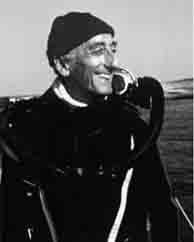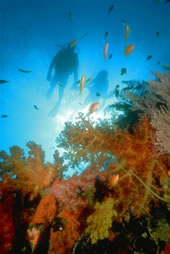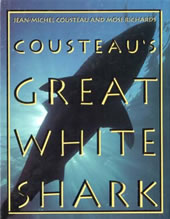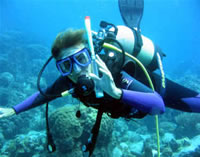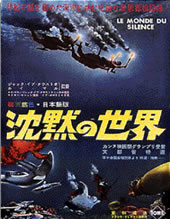
| French Home Page |
| Paris Home Page |
| Icons of France |
| Famous French People |
| 19th Century France Home Page |
| Christmas in France |
| Chateaux in France |
| An environmentalist and explorer | ||||||
|
Jacques-Yves Cousteau has been called the "explorer of the world of silence". He invented SCUBA and pioneered unaided deep sea diving and underwater photography. He is regarded as one of the first scientists to foster and promote interest in protection of the underwater environment. Jacques Yves Cousteau was born in 1910 and died in 1997. He had a privileged background because his father was the lawyer for an American billionaire. At 13, he had already developed a passion for amateur film-making. Jacques-Yves also loved the sea and enjoyed sailing and swimming. He attended Naval School, then became an officer in the French navy and also learned to fly. A serious car accident in 1936 forced him to give up his career as a pilot. During World War II, Cousteau concentrated on underwater photography. With his camera fitted inside a glass bowl, he spent his free time filming shipwrecks and the magnificent underwater world of the Mediterranean, in waters then still totally unpolluted.
The public owes most of its knowledge of ocean life to the television programs of Jacques Cousteau. Although the early programs were in black and white, they captivated audiences globally. To film and work underwater, Cousteau designed small "diving saucers" and, later, underwater cabins. These could work at a depth of 110 metres. Sometimes the "oceanauts" worked at this depth for up to several weeks at a time.After many years on the oceans, the explorer had become aware of the threat posed by people to marine eco-systems and the Planet as a whole. In 1960, he campaigned against the dumping of radioactive waste in the Mediterranean and General de Gaulle, then President of the Republic, put an end to the practice. In the United States, in 1974, he set up the Cousteau Society to promote the protection of the Planet and to raise funds. At the Rio Earth Summit in Brazil, in 1992, he launched a petition for the rights of future generations which received more than 5 million signatures. The media nicknamed him "Captain Planet". He died on June 25, 1997, at the age of 87. Today, his work is carried on by his family who also organise eco-tours and continue to film the mysteries of the deep. Source: Antoine Trièves Journalist © ministère des Affaires étrangères. Label France. |
| Pioneer of SCUBA | ||
|
Jaques Cousteau was an environmentalist and underwater explorer. He pioneered the use of underwater photography and SCUBA apparatus.
Cousteau always wore a red beanie. It was his trademark.
Cousteau prepares for a dive wearing his SCUBA gear.
Cousteau's invention of SCUBA made underwater exploration possible for all, not just specialist divers.
His underwater TV series were one of the first environment documentaries to be telecast world wide.
Cousteau's underwater world - at one time only possible for those with very specialised equipment, but now open to most people.
Cousteau's works were translated into many languages. This is a Japanese poster for The World of Silence (1956), which revealed the treasures of the deep to the entire world.
|
||
On other pages
Did you know?

This is the flag of Paris.
Notre Dame was nearly demolished. It was only saved by Victor Hugo's campaign to save it. Click here to find out more.

Sacré Coeur is not really that old. Click here to find out about it.

The Parisians hated the Eiffel Tower when it was first constructed. They wanted to pull it down. Click here to find out more
